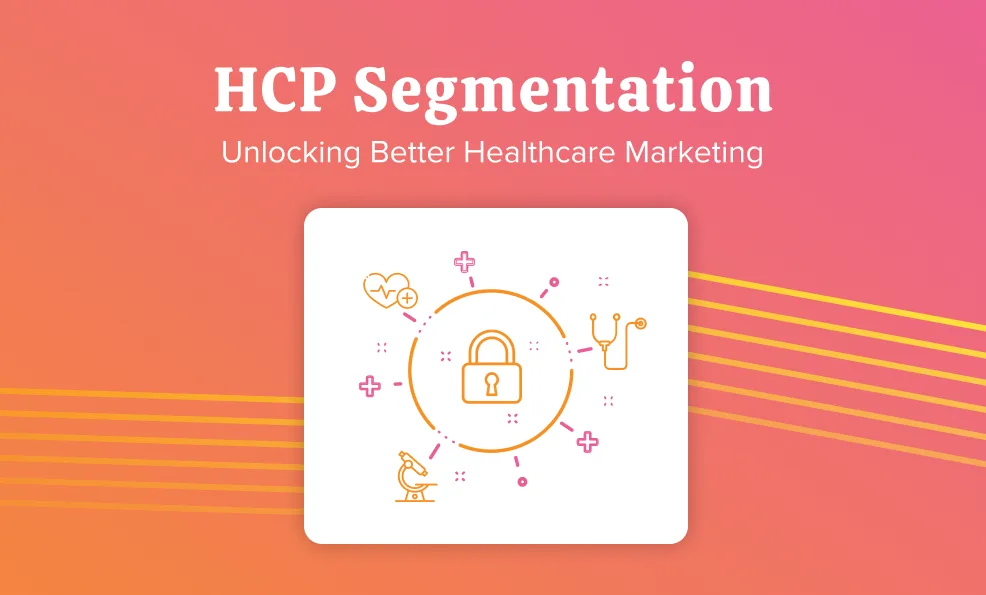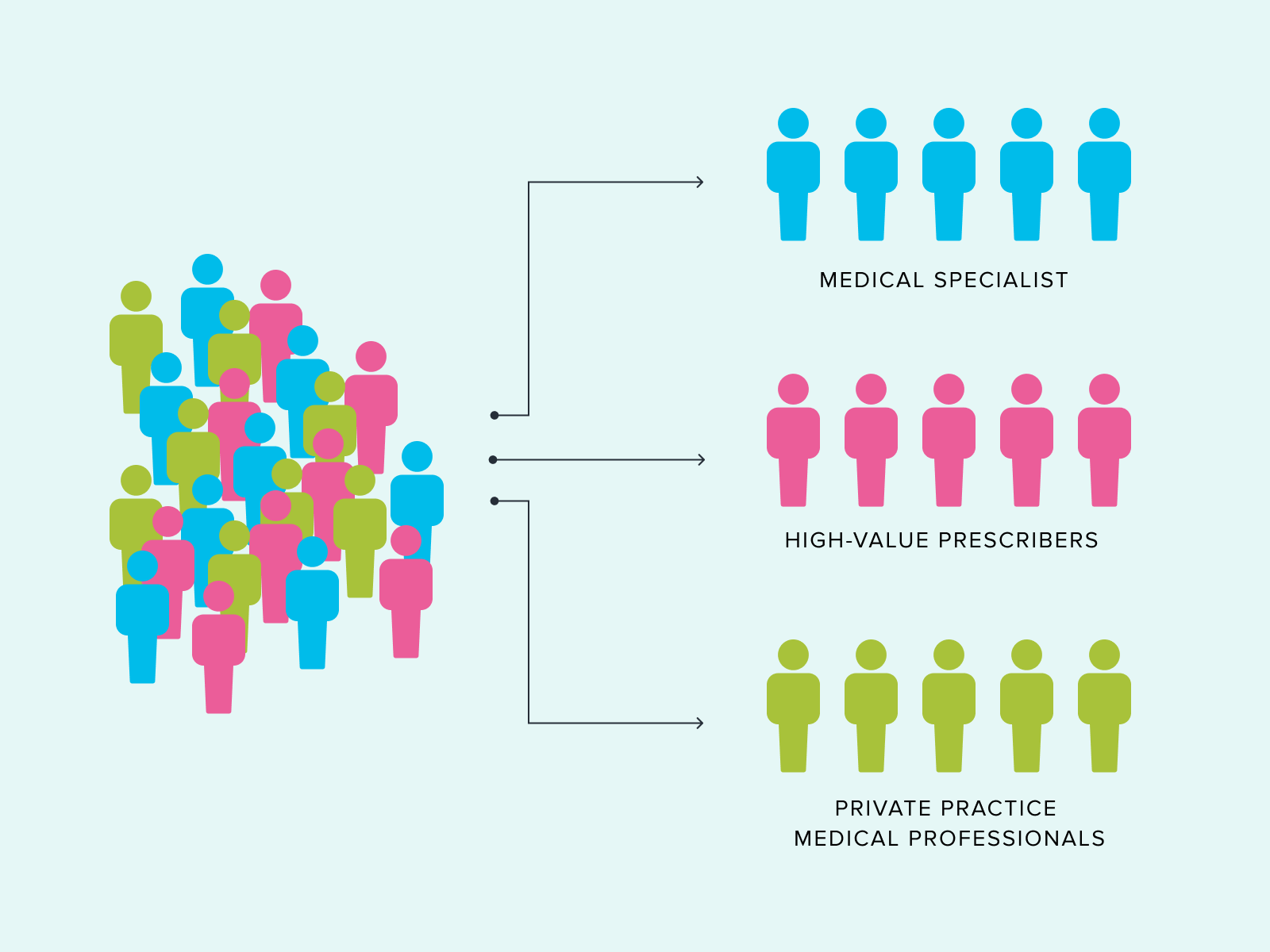
Key Takeaways:
Segmentation isn’t optional; it’s foundational. Successful healthcare marketing starts by targeting the right healthcare providers (HCP) based on specialty, behavior, setting, and more.
AI supercharges segmentation. Machine learning helps uncover high-value HCP segments, optimize content delivery, and continuously improve performance.
Data + Strategy = Real Impact. TrendyMinds helps healthcare brands engage HCPs with personalized, scalable campaigns that drive results.
In an era of personalization and precision, healthcare marketers can’t afford to take a broad-strokes approach to engaging HCPs. Physicians, pharmacists, nurse practitioners, and healthcare specialists all have different needs, behaviors, and expectations when it comes to consuming information and taking action.
That’s why effective audience segmentation is key. At TrendyMinds, we help our healthcare clients go beyond generic outreach, by crafting strategic, data-driven campaigns that reach the right HCPs with the right message at the right time. Because when your message is as specialized as your audience, real engagement follows.
What is segmentation and why does it matter?
Audience segmentation is the process of dividing a broad audience into smaller, more defined groups based on shared characteristics.
In healthcare marketing, this means segmenting HCPs based on factors such as specialty, prescribing behavior, geographic location, institutional affiliation, digital engagement, and other relevant characteristics. Understanding these different factors will be vitally important as you use tools to begin segmenting these individuals.
At TrendyMinds, we help healthcare brands dig deeper than demographics. By using data-driven segmentation strategies, we identify the HCPs most likely to engage and take meaningful action, whether that’s prescribing a treatment, attending an event, or championing new patient education tools.
Effective segmentation can improve campaign performance by enabling:
More personalized and relevant messaging
Better resource allocation across your channel mix
Higher engagement rates
Media spend optimizations (reallocation to ROI driving segments)
Improved ROI and stronger patient outcomes
Ultimately, segmentation lets us move beyond impressions to impact.
Key Considerations in HCP Segmentation
When it comes down to precisely segmenting HCP audiences, it’s important to consider both qualitative and quantitative data. Here are a few dimensions that we start with at TrendyMinds when building HCP audience segmentation anchors:
Specialty & Subspecialty: Tailoring by field (e.g., cardiologists vs. general practitioners) ensures clinical relevance.
Prescribing Behavior: Data-driven insights into who is writing scripts, and for what, can focus outreach on high-value prescribers.
Practice Setting: Hospital-based physicians often engage differently than those in private practice or academic centers.
Digital Behavior: Are they webinar attendees? eNewsletter subscribers? EHR users? These clues help inform omnichannel targeting.
Geography & Market Access: Regional access restrictions, payer mix, and formulary status can all affect the decision-making process.

The Role of AI in Smarter Segmentation
AI and machine learning are rapidly reshaping how we approach HCP segmentation. By analyzing massive datasets, claims history, prescription trends, and engagement metrics, AI can identify patterns and surface insights that manual segmentation methods might miss.
For example, instead of just filtering by specialty or prescribing volume, AI can help answer more complex questions:
Which HCPs are likely to become high prescribers in the next 6 months?
Who’s treating patients that align with our ideal patient profile but haven’t engaged with our messaging yet?
What content formats are most effective for different behavioral clusters of HCPs?
Machine learning models can automatically group HCPs into predictive clusters based on shared characteristics and behaviors, often uncovering high-value segments that traditional rules-based logic would overlook. This results in more tailored outreach, smarter content delivery, and increased conversion.
AI also helps optimize outreach frequency, preferred channels, and messaging themes, all while continuously learning and adapting based on performance. It’s not just smarter targeting, it’s ongoing optimization.
Tools to Build High-Precision HCP Audiences
At TrendyMinds, we blend AI-driven insights with trusted data platforms to help clients identify, build, and activate audience segments that drive results.
SEMcasting – Audience Designer
SEMcasting’s Audience Designer enables identity-based targeting with access to rich HCP data. Marketers can build audiences using specialty, location, and prescribing patterns while ensuring compliance with privacy regulations.
PurpleLab – Data-Based Modeling
PurpleLab provides real-world data that fuels segmentation based on clinical activity, patient cohorts, and therapeutic alignment. Combined with machine learning, it enables predictive targeting models tailored to specific campaigns or product lifecycles.
CRM + List-Building Approaches
Whether you’re starting with a house list, speaker bureau data, or an opt-in contact pool, first-party CRM data can be enriched with third-party behavioral insights and AI-powered lookalike modeling to unlock new potential segments.
The Takeaway: Data + AI = Smart, Scalable HCP Engagement
Effective HCP engagement begins with knowing your audience, and segmentation is the blueprint that brings strategy to life. Today, AI isn’t just a buzzword; it’s a critical component of reaching HCPs with relevance, precision, and efficiency.
By combining powerful data tools with machine learning, healthcare marketers can unlock deeper insights, discover hidden opportunities, and engage the right HCPs in ways that truly resonate.
At TrendyMinds, we’re helping healthcare brands evolve their targeting strategies with AI-powered solutions that deliver results. If you’re ready to build smarter, more scalable HCP campaigns, let’s talk.